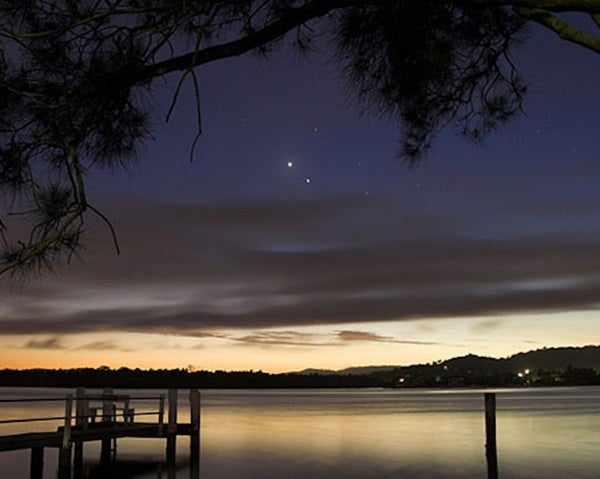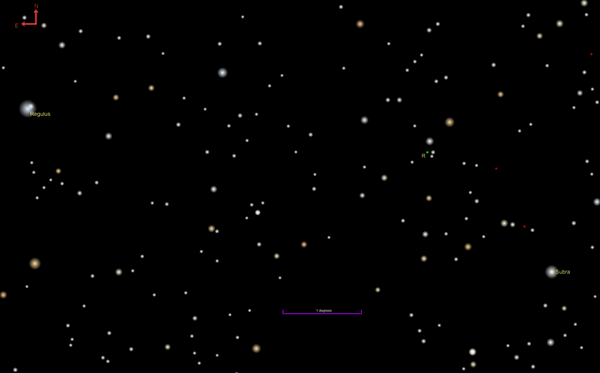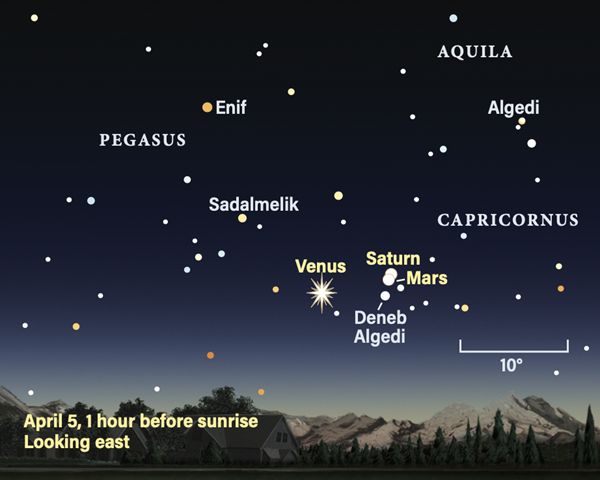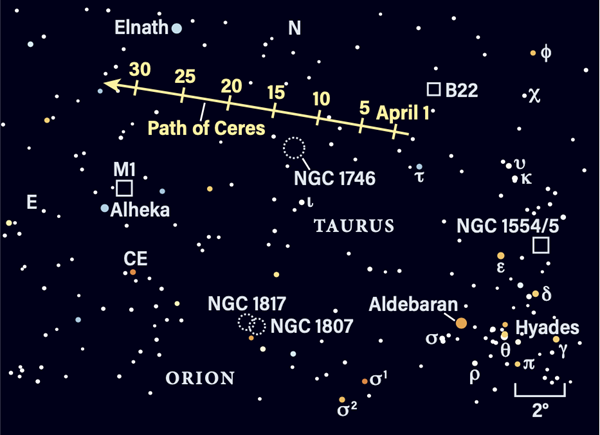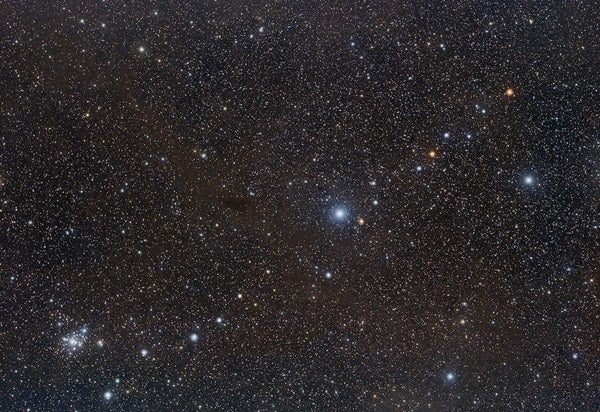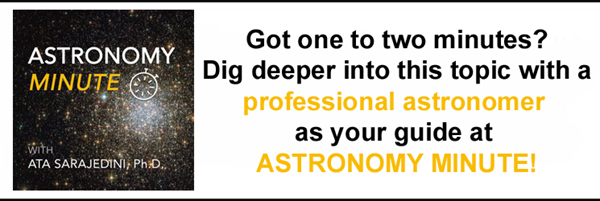Friday, April 1
The month of April begins with the Moon in its New phase, which occurs at 2:24 A.M. EDT. That makes this evening a great opportunity to look for the elusive zodiacal light, which is generated by sunlight scattering off tiny dust grains in the inner solar system. Astronomers think these grains were scattered through the solar system by the repeated passage of comets, although more recently, martian dust storms have been implicated as well.
During the spring, this glow appears above the western horizon after sunset. The key is that you’ll need a dark observing site, clear skies, and the less obstructed your view of the horizon to the west, the better. The zodiacal light’s soft glow is aligned with the ecliptic, which stretches upward through Pisces, Aries, and Taurus. Nightscape photography can be a perfect way to bring out this ethereal light.
April also marks the beginning of Global Astronomy Month, presented by Astronomers Without Borders. This worldwide celebration of the night skies encourages everyone to look up and enjoy the night sky above them with global star parties, Facebook events, and more.
Sunrise: 6:44 A.M.
Sunset: 7:25 P.M.
Moonrise: 7:11 A.M.
Moonset: 8:02 P.M.
Moon Phase: New
*Times for sunrise, sunset, moonrise, and moonset are given in local time from 40° N 90° W. The Moon’s illumination is given at 12 P.M. local time from the same location.
Saturday, April 2
Mercury reaches superior conjunction with the Sun at 7 P.M. EDT. But don’t worry — in just a few short weeks, the speedy planet will achieve its best evening appearance of the year, so stay tuned for details on how to see it later this month.
Meanwhile, let’s take a look at the American Association of Variable Star Observers’ featured variable of the month: R Leonis. This star resides, as its name might imply, within Leo the Lion, who is already climbing the sky in the southeast after sunset. R Leonis is located near the great cat’s front paw, 2.2° northeast of magnitude 3.5 Subra and just over 5° west of mighty magnitude 1.4 Regulus, the Lion’s heart.
R Leonis itself is a red giant star in the latter stages of its life. It is a long-period Mira-type variable, whose magnitude ranges from 4.4 — visible with the naked eye — to 11.3, invisible without binoculars or a telescope. Fortunately for us, it recently hit a maximum just over a week ago in late March, meaning you’ll be able to spot it without any optical aid at all under good observing conditions. As its period is about 312 days, or nearly a year, R Leonis will take several months to fade to its minimum before brightening again. This spring and summer will be an excellent time to return to this star over and over again, comparing it with its nearby neighbors and watching it vanish from (naked-eye) sight. The star’s next maximum will come at the end of January 2023.
Sunrise: 6:42 A.M.
Sunset: 7:26 P.M.
Moonrise: 7:35 A.M.
Moonset: 9:06 P.M.
Moon Phase: Waxing crescent (2%)
Sunday, April 3
The delicate crescent Moon passes 0.6° south of Uranus at 1 P.M. EDT. By an hour after sunset this evening, they are just over 3° apart in Aries the Ram, setting slowly in the west.
Uranus, at magnitude 5.9, is an easy binocular object, sitting west-southwest of the Moon,’s Cheshire grin. Both float picturesquely below the stunning Pleiades open cluster, also cataloged as M45, which lies in Taurus the Bull. This young grouping of stars resembles a tiny dipper in the sky, sometimes mistaken for the much larger Little Dipper in the north. It is best enjoyed with the naked eye or low-power binoculars or a small scope, as its stars are scattered across about 110′ on the sky and won’t all fit into a high-powered field of view.
Astrophotography can bring out the delicate wisps of interstellar dust and gas surrounding the Pleiades, although this material is not, as is commonly thought, left over from the stars’ formation. Instead, it is an unrelated molecular cloud that the stars just happen to be traveling through at the current epoch in time.
Sunrise: 6:40 A.M.
Sunset: 7:27 P.M.
Moonrise: 7:59 A.M.
Moonset: 10:10 P.M.
Moon Phase: Waxing crescent (6%)
Monday, April 4
We’re gearing up for a big show: Mars passes 0.6° south of Saturn at 6 P.M. EDT. Although both planets are below the horizon at that time, they will grow even closer in the subsequent hours. Check back tomorrow for the best early-morning view as these two planets make a close (apparent, of course) pass.
Since you’ll want to be up early tomorrow morning, tonight’s observing can be done right after sunset, when the Rosette Nebula in Monoceros is some 50° high in the southwestern sky. This gorgeous deep-sky object is one of the most famous diffuse nebulae in the sky, and actually comprises both nebulae and a young open star cluster, NGC 2244. You’ll find your target just 2.2° northeast of 4th-magnitude Epsilon (ϵ) Monocerotis.
Even a small scope will capture some two dozen stars. Bump up your aperture and even more will appear. If you want to spot the nebulosity that surrounds them, consider switching back to low power and swapping in a nebula filter to reduce the stars’ glare and bring out the surrounding clouds of dust and gas instead. This object is a favorite of astrophotographers, so if you’re so inclined, give it a go!
Sunrise: 6:39 A.M.
Sunset: 7:28 P.M.
Moonrise: 8:26 A.M.
Moonset: 11:13 P.M.
Moon Phase: Waxing crescent (12%)
Tuesday, April 5
Today is the day! Mars and Saturn float a mere 24′ apart in the morning sky. They rise about two hours before dawn, so wait until about 90 minutes before sunrise to go looking, when the pair is nearly 5° high and climbing in the east. The two lie near magnitude 2.9 Deneb Algedi in Capricornus, but both far outshine this luminary: Mars, sitting just below Saturn, glows magnitude 1.1, while the ringed planet is a brighter 0.7. Compare and contrast their colors, first by eye and then through binoculars or a telescope, either of which will easily show both planets in the same view. This is an amazing chance to see both Mars’ orangey-red deserts and Saturn’s stunning rings, all in a single glance.
Not to be outdone, Venus sits some 7.5° to the pair’s east-northeast, having crossed into Aquarius yesterday. Earth’s sister planet is an unmissable morning star at magnitude –4.3, while through a telescope, it shows off a nearly 60-percent-lit disk.
Jupiter and Neptune continue the planetary parade, rising about 50 minutes before the Sun. Some 20 to 30 minutes before sunrise, you may catch them in binoculars or your finder scope, some 1.4° apart and 5° above the horizon. Mighty Jupiter will pop out easily at magnitude –2, while Neptune’s tiny, magnitude 7.8 disk will be more elusive in the brightening sky.
Sunrise: 6:37 A.M.
Sunset: 7:29 P.M.
Moonrise: 8:58 A.M.
Moonset: —
Moon Phase: Waxing crescent (19%)
Wednesday, April 6
The Moon passes 0.2° south of dwarf planet 1 Ceres at 5 A.M. EDT, though neither are visible at this time. By evening, the waxing Moon has pulled some 7° away, sitting far east of Ceres and now near magnitude 1.7 Elnath, which marks the tip of one of Taurus’ two horns.
Meanwhile, Ceres is traveling near the open cluster NGC 1746, less than 2.5° east-southeast of the dwarf planet tonight. Ceres will continue traveling northeast this month, sliding right over the cluster early next week. Not far from this pairing is the famous Crab Nebula (M1), which sits just over 1° from Taurus’ other horn tip, Alheka. The nearby Moon may make this celestial treasure a bit hard to spot, however, so consider returning to the region in a few days’ time once our satellite has moved on to truly enjoy its many fainter treasures.
Sunrise: 6:36 A.M.
Sunset: 7:30 P.M.
Moonrise: 9:35 A.M.
Moonset: 12:15 A.M.
Moon Phase: Waxing crescent (27%)
Thursday, April 7
The Moon reaches apogee, the farthest point from Earth in its orbit, at 3:11 P.M. EDT, when our satellite will sit 251,306 miles (404,438 kilometers) away.
Our target tonight lies in Camelopardalis the Giraffe, a circumpolar constellation in the north. Here, we’re looking for a famous “waterfall” of stars called Kemble’s Cascade, identified by Franciscan amateur astronomer Father Lucian Kemble. The Cascade is in the southern part of the constellation, about 4.5° north-northeast of 4th-magnitude HIP 16228. (Most stars in this constellation have neither proper names nor Greek designations.) Astronomy columnist Glenn Chaple says you can find it by sweeping the area “defined by a line traced from Beta (β) through Epsilon Cassiopeiae and extended an equal distance beyond.”
Kemble’s Cascade consists of 15 stars stretched across a region of sky about 2.5° long, which tumble down into the 6th-magnitude open cluster NGC 1502. It’s easily visible with binoculars or a small scope, and you’ll know it by the brighter 5th-magnitude star that sits about halfway down the chain. The asterism stretches northeast-southwest on the sky, with the open cluster at its southwestern tip.
Sunrise: 6:34 A.M.
Sunset: 7:31 P.M.
Moonrise: 10:17 A.M.
Moonset: 1:14 A.M.
Moon Phase: Waxing crescent (35%)
Friday, April 8
With the still-waxing Moon now lighting up Gemini, let’s look north again this evening in search of the galaxy NGC 4449, located in Canes Venatici the Hunting Dogs. This 9th-magnitude galaxy covers about 5′ and has a high surface brightness, making it relatively easy to observe, particularly in larger scopes, which bring out its rectangular shape. This odd galaxy is classified as a Magellanic-type galaxy because of the resemblance it bears to our own Large Magellanic Cloud. In a large (11-inch or bigger) scope with high magnification (250x), you may be able to glimpse the galaxy’s irregular central halo, as well as several brighter regions of star formation throughout.
To find NGC 4449, look about 3° northeast of Chara, the Hunting Dogs’ 4th-magnitude beta star. Alternatively, you can sweep 15° south of Alioth, the third star in from the end of the Big Dipper’s handle, which sits between the Dipper’s cup and the famous double star pair of Mizar and Alcor.
Sunrise: 6:33 A.M.
Sunset: 7:32 P.M.
Moonrise: 11:07 A.M.
Moonset: 2:08 A.M.
Moon Phase: Waxing crescent (45%)

